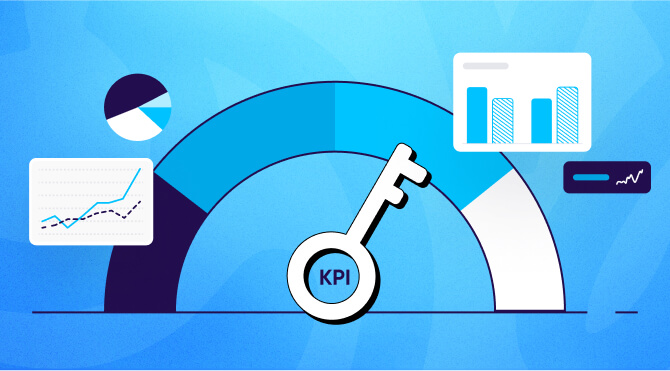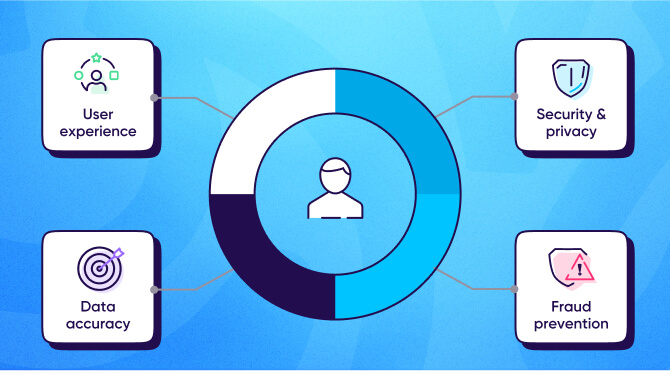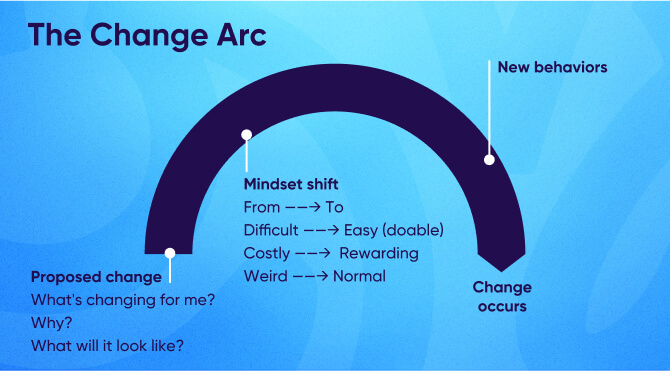Cross-channel marketing in 2024: Perfecting the channel mix formula


Nothing is linear anymore. We live our lives on the go, with apps and devices to manage everything from our home heating to our grocery shopping and favorite TV shows. The way consumers shop today is even more nonlinear. It might take a series of ads on TV, Hulu, billboard, Instagram feed, and at the movie theater before they even consider buying a product.
In today’s hypercompetitive world, every touchpoint matters. And it’s up to the brand to build a customer experience that is not only non-intrusive, but seamless and engaging.
That’s what cross-channel marketing is all about — using multiple marketing channels to reach, engage, and convert customers in a seamlessly integrated experience.
In this guide, we’ll cover everything you need to know about cross-channel marketing, with expert strategies on how to execute it in today’s complex digital landscape. No more “spray and pray” — it’s time to start designing joined-up customer experiences that get results.
What you need to know about cross-channel marketing

From digital billboards at the bus stop to personalized TikTok feeds, people are consuming content in a myriad of new ways. This presents an opportunity for you to engage with your audience at the right place and at the right time, wherever they go.
But it’s not only about distributing your message across different channels. You also need each channel to communicate with each other to ultimately build a unified, and great, customer experience.
Solving the cross-channel marketing equation also helps you measure the effectiveness of your campaigns, while building more meaningful relationships throughout the customer journey.
So how do you do it well? Your advertising success hinges on a few key factors, including your channel mix, messaging, and attribution. But before we dive into that, let’s talk about what the landscape looks like for advertisers today.
Cross-channel marketing landscape

Cross-channel marketing is becoming the norm as businesses grow more comfortable using different marketing tools and platforms. Around three quarters of small businesses use at least two marketing channels to promote their business, while 20% of them use five channels.
Here are some of the themes and trends shaping the current landscape.
Personalization and AI
While artificial intelligence (AI) and machine learning have recently entered the public consciousness, such tools are nothing new in advertising (especially in programmatic). However, generative AI is making it easier than ever to personalize messaging and creatives at scale — especially with ad platforms baking in generative AI tools into the workflows themselves. This helps marketers craft personalized ad experiences based on timing and customer needs.
Data privacy
Customers are also becoming more wary of data privacy issues. Apple’s massive ATT changes have spurred big changes in online advertising, including pushing Google into accelerating the deprecation of cookies and introducing more data privacy protocols. This has affected the way marketers can collect customer data and handle personally identifiable information.
Probabilistic modeling
Probabilistic modeling is the product of the two points above. With increasing data privacy changes making it more difficult to target individual customers, AI and machine learning are helping marketers move from deterministic to probabilistic modeling to accurately predict campaign performance. AI can connect the dots on many more data points to identify demographics and behaviors, funneling the right customers down the appropriate path.
How to develop a cross-channel marketing strategy
Great change requires a great plan, and you want to make sure you’re covering all your bases before going all-in. Here’s a general framework to help you get started with your cross-channel strategy.
Be a practical visionary
The very first step is to build a business case with real data and examples. “Because everyone else is doing it” isn’t a good enough reason to invest in a completely new strategy.
Shifting to a cross-channel marketing strategy is neither quick nor cheap, and will require organizational buy-in, especially if you need to get your expanded budget approved. Identify the issues with your current marketing initiatives, while presenting the upsides of shifting to cross-channel marketing. Focus on the financials for maximum impact.
Understand where your customers are

No matter what channels you’re using, marketing is always about your customer. Surveys, questionnaires, interviews, focus groups, historical data, and social listening are all excellent ways to learn more about them. Then, create personas incorporating their demographics, content consumption habits, and preferred channels.
Figure out your modeling mix
On top of getting your customer data, analyze your competitors, find industry benchmarks, and analyze historical channel performance to help determine which channels to invest in.
The right channel mix will depend on your business. Before you decide on a model, you’ll need to gather, clean, and prepare the following data:
- Sales data
- Marketing spend per channel
- Control and seasonality variables
With a workable dataset, you can also determine the best model for you by considering the following factors:
- Changing ROI over time: Does your model identify the factors of changing performance (algorithm changes, new competitors, competitor increasing budgets, keyword competition)?
- Timelines per channel: Does your model take into consideration how long it takes to see the impact of your campaigns based on the channel? What about time delays?
- Declining marginal efficiency of spend: Does the model consider declining effectiveness of ad spend?
- Model seasonality: Does your model consider the changes in spending behaviors throughout the year?
Measure the right numbers

A flawless cross-channel marketing initiative hinges on understanding the numbers behind it. And unlike traditional linear campaigns, the metrics need to paint the whole picture of how every ad dollar contributes to the bottom line. Here are some metrics to consider:
- Sales metrics: revenue, customer acquisition cost (CAC), return on ad spend (ROAS), lifetime value (LTV)
- Brand metrics: brand awareness, brand lift, brand mentions, net promoter score (NPS), sentiment analysis
- Traffic metrics: traffic by source, new customers, website traffic
- Channel metrics: conversion rates by channel, reach by channel, impressions, bounce rates
Above all this, the data you gather must be able to tell a story of how each campaign contributes to the success of your marketing campaigns. Since cross-channel marketing is all about how the various channels communicate and interact with each other, you need the metrics that prove it.
Gather your data sources
One of the biggest challenges in running multiple campaigns across different channels is breaking down data silos. You need to get a firm grasp of where all your data is flowing and where you need it to go. Gathering your data sources here will help you understand what tools you’ll need to execute on your plan.
Identify the right technology
There’s no perfect, one-size-fits all marketing tech stack that will flawlessly execute your cross-channel campaigns. But once you have a firm understanding of the channels you want to use, you can identify the right tools that work best for your budget.
Here are some questions to help you determine your exact needs:
- What are your growth goals to inform data volume and scalability needs?
- What does your customer journey look like?
- What are the primary KPIs for each step of the journey?
- What additional events would be helpful to measure, in order to optimize the full customer journey?
- What channels and functionalities will you need to acquire and retain users?
- What media partners are you working with (or planning to work with)?
- What infrastructure will you need to store and manage data?
- Who owns your data, and what security protocols should you consider to ensure your data is safe?
- How will you visualize marketing and product performance?
- Do you need a full-funnel view of marketing/product activity across channels and platforms?
For a full in-depth rundown, read our guide on how to build an app-centric MarTech stack here.
Nail down your messaging
Brand consistency – a uniform message, voice, tone, color palette, and imagery across all touchpoints – makes it easier for your brand to be remembered and stand out. Scattered messaging can easily turn into white noise.
Here are the most important aspects of brand messaging to get in writing:
- Brand promise: What do people want from you, and how can you deliver?
- Positioning statement: What makes you different?
- Target audience: Who do you serve?
- Mission: How are you changing the world?
- Tone of voice: How do you speak to your audience?
- Brand pillars / core values: What do you stand for?
- Customer benefits: How do you actually help your customers and what supporting examples do you have?
Determine your internal capabilities
To allocate your resources effectively, you first need to define your team’s skills and capacity to execute your cross-channel marketing strategy. This will help you determine whether you need to upskill current team members, shift roles horizontally, or increase your budget to bring in new hires.
This isn’t just about your team’s strengths and weaknesses — ask them what they want to learn and what they’re passionate about. Capacity planning is understanding how much bandwidth each team member has and what they’ll be able to take on in the new initiative.
Solve attribution

Now that you have a good understanding of what you need to achieve, it’s time to figure out how to measure the success of your campaigns. Without trustworthy data, you won’t be able to make informed decisions on how to optimize your campaigns.
According to Statista, the leading approach to achieving cross-media measurement is a combination of proprietary and third-party measurement solutions for each platform (29%). Only 15% of marketers use one third-party measurement platform to measure all platforms.
So, before you shop around for an attribution partner or a combination of different tools, identify your attribution needs by answering the following:
- What is this provider doing to protect customer privacy?
- How are they using AI?
- What are their insight tools?
- What platforms and channels do they measure?
- Do they have an effective solution to measure iOS campaigns?
- How are they combating ad fraud?
Leading change and garnering organizational buy-in

As a leader, proposing a solution to a key business challenge is only one small piece of the puzzle—particularly if you’re in a mature organization that may be stuck in its ways.
If cross-channel marketing isn’t a priority, you need to build a business case to change the shift of this being a “difficult, costly, and weird” challenge to being “doable, rewarding, and normal.”
Start by asking yourself the following questions:
- Who are the stakeholders involved in gaining organizational buy-in?
- What are the current challenges of our marketing operations? How is it affecting our business? Why do we need to change?
- What are the costs associated with running this program? What’s the profit potential?
- What specific aspects of cross-channel marketing seem difficult?
- What terms, phrases, or concepts are confusing to the stakeholders?
- What does a future with cross-channel marketing look like?
Answering each of these questions by providing concrete examples, evidence, and numbers will help you successfully communicate your new initiative. Nervousness, hesitation, and resistance are normal. It’s your job to ensure everyone feels heard and supported, while presenting this approach as a win for everyone involved.
Key takeaways
- Cross-channel marketing is the marketing strategy that uses multiple marketing channels to reach, engage, and convert customers. These channels should be integrated and coordinated for a unified customer experience.
- The key elements of a cross-channel marketing strategy include: setting a clear vision, building customer profiles, solving media modeling, setting clear metrics, unifying data sources, building a tech stack, nailing down messaging, determining internal capabilities, and solving attribution.
- Building a great strategy is only one part of the equation. To get buy-in and drive organizational change, you need to present the benefits of a cross-channel marketing strategy with facts and benefits for each individual stakeholder.







